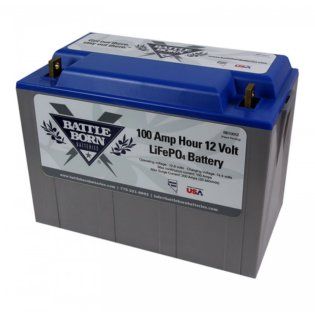Kannon Fodda
LIFE MEMBER
- Feb 26, 2019
- 3,161
- 9,816
- Funster No
- 58,768
- MH
- Autotrail V-line 540
- Exp
- I Make Schoolboy Errors!
After a few days sat outside my house, on solar power only, the Victron Connect software is reporting the Sterling Lithium voltage as 13.57V, whilst the Metatrak monitoring stuff linked with the Strikeback alarm says the engine battery has a voltage of 13.5V. I know fully charged batteries have voltages higher than 12V, but that engine seems very high if a standard lead- acid is fully charged at around 12.6 / 12.7 V according to most tables I see. Even at night, and I'm not on hookup, the Sargent display is showing that both leisure and engine batteries are in charging status, presumably due to these voltages. Do I have a problem?
Current installation is 100A solar panel, now through a Victron 75/15 MPPT, somehow to the Sterling 120Ah LifeP04. There is a Sterling BB1260 B2B with feed from somewhere up front to the LifeP04. A Vanbitz Battery Master is wired through the B2B inputs and outputs to take spare charge from the LifeP04 back to the engine battery. Originally the leisure battery was charged via the combined Sargent EC176 thing that does EHU leisure charging, 230V and 12V habitation, but the connection from the engine has apparently been pulled (12v fuse in the floor unit behind the drivers seat). With Autotrail the leisure battery, controllers and stuff are all at the rear of the van, leaving the engine battery in the floor well to the front of the passenger seat. The wiring upgrades of B2B, MPPT, Lithium were all carried out by Vanbitz so I'm sure the wires are correct, it's just the voltages that seem high as if something may not be cutting out when intended?
The Victron Connect software shows that in the last few days the panel has initially been charging at bulk (I can't see a setting saying what voltage that might be, but manuals imply it focuses on current rather than voltage). It then switches to absorption (14.6V) for a couple of hours before a float charge voltage (13.8V). The Sterling LifeP04 data sheet says max charge voltages are 14.8V, recommended charge 14.6V and float 13.8V. Are the MPPT controller settings correct, and if the solar is trying to float charge at 13.8 does this explain why the Battery Master is trying to also raise the engine? Do I need to change something?
Thanks
Current installation is 100A solar panel, now through a Victron 75/15 MPPT, somehow to the Sterling 120Ah LifeP04. There is a Sterling BB1260 B2B with feed from somewhere up front to the LifeP04. A Vanbitz Battery Master is wired through the B2B inputs and outputs to take spare charge from the LifeP04 back to the engine battery. Originally the leisure battery was charged via the combined Sargent EC176 thing that does EHU leisure charging, 230V and 12V habitation, but the connection from the engine has apparently been pulled (12v fuse in the floor unit behind the drivers seat). With Autotrail the leisure battery, controllers and stuff are all at the rear of the van, leaving the engine battery in the floor well to the front of the passenger seat. The wiring upgrades of B2B, MPPT, Lithium were all carried out by Vanbitz so I'm sure the wires are correct, it's just the voltages that seem high as if something may not be cutting out when intended?
The Victron Connect software shows that in the last few days the panel has initially been charging at bulk (I can't see a setting saying what voltage that might be, but manuals imply it focuses on current rather than voltage). It then switches to absorption (14.6V) for a couple of hours before a float charge voltage (13.8V). The Sterling LifeP04 data sheet says max charge voltages are 14.8V, recommended charge 14.6V and float 13.8V. Are the MPPT controller settings correct, and if the solar is trying to float charge at 13.8 does this explain why the Battery Master is trying to also raise the engine? Do I need to change something?
Thanks


